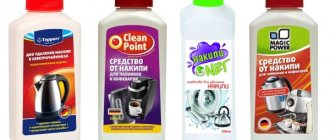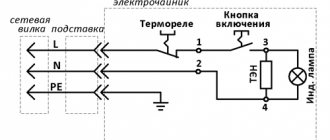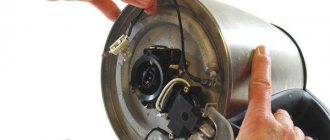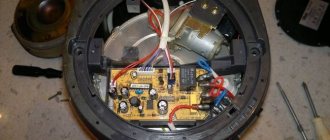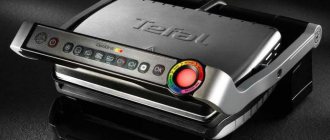Human life is not complete without hot drinks: tea, coffee, chocolate, cocoa. It is not very convenient to boil water every time, so devices such as an electric kettle and a thermopot were created. They run on electricity and help heat water to the desired temperature. Despite the fact that they perform the same functions, they still have fundamental differences. To make the right choice, we will try to answer the question: “Which is better a thermopot or an electric kettle?”
Principle of operation
The kettle boils water in just a few minutes and turns off automatically. But gradually the water cools down, this takes 20–30 minutes depending on the air temperature in the room. The electric kettle can be moved, if necessary, from one room to another. Basically, its volume does not exceed 0.5-3 liters, but buyers usually choose a kettle with a volume of one and a half to two liters. There is a wide range of electric kettles on the market. Manufacturers offer versions in different styles, modifications and with different cases - metal, plastic, ceramic and even glass.
Stationary thermopots hold 2.5–6 liters of water. Thermopot is a hybrid of a kettle and a thermos. You can boil water in it, which will maintain its temperature for 10–15 hours. Of course, after a few hours the temperature will drop to 80-70 degrees, but this will be enough for a cup of hot drink.
The process of boiling liquid in a thermopot takes much longer than in an electric kettle. It will take at least 15 minutes, and in some models even 30. Water supply can be manual or automatic.
See also:
- 5 Best De'Longhi Electric Kettles of 2021
- 5 best Philips electric kettles
- 5 Best Braun Electric Kettles
- 7 Best Scarlett Electric Kettles of 2021
- 8 best thermopots according to customer reviews
- 9 best electric kettles REDMOND
Comparison of characteristics
Thermopot:
- Purpose: boiling and maintaining a given water temperature;
- Heating element: disk or spiral;
- Volume: from 3 to 10 l;
- Power: up to 800 W;
- Price: from 800 to 4000 rubles;
- Boiling time: from 13 minutes.
Electric kettle:
- Purpose: boiling water:
- Heater: disk or spiral;
- Volume: from 500 ml to 3 l (the most popular option is 1.7 l);
- Power: from 700 W to 3 kW;
- Price: from 350 to 2000 rubles;
- Boiling time: average 6 minutes.
The electric kettle benefits from its low price. The tank volume is smaller, so the water boils faster. But, the device cannot constantly maintain the specified water temperature. It can remain hot for no longer than 2 hours (depending on the material and design of the device). Both devices are equipped with the same heating elements.
The boiling speed depends not only on the power, but also on the material used to make the device. The body of the thermopot is usually made of plastic. Inside the case there is a water container made of metal or glass. Electric kettles can be made from ceramics, plastic, metal and glass.
Note! When choosing a device, you need to focus on the following criteria: the required volume of water, temperature conditions, frequency and conditions of use.
What is the difference
Before making a choice, let's take a closer look at the differences between these devices:
- A kettle consumes electricity only to boil water, but a thermopot requires electricity on an ongoing basis: to boil water and maintain the required temperature.
- Dimensions and mobility – in this category, the best option is an electric kettle.
- Almost all thermopots have water filters that need to be changed periodically.
- Usually the body of the electric kettle gets very hot. This mainly applies to glass and metal units. In this regard, a thermopot is much safer - its walls retain heat and do not heat up, so the possibility of injury is excluded.
- Some thermopot models have two water tanks, one of which can be used to regulate the heating temperature. Thanks to this, you can simultaneously draw water of different temperatures, like a cooler.
Functional features of electric kettles
If we talk about the functionality of an inexpensive kettle, then there is nothing special about it. But devices belonging to the middle and premium class received:
- Timer.
- Function of blocking of start-up without water or from accidental start-up.
- Alarm.
- Watch.
- Heating.
- Thermostat.
- Remote control via a mobile device.
Functional features of thermopots
Thermopot is much more convenient to use and more functional. Simple models contain 3–4 temperature settings. Among the auxiliary functions are:
- Child lock.
- Blocking the device from turning on without water.
- Lid lock when tipped over.
- Temperature regulation.
- Indicator of water level, filter, cleaning.
- Additional capacity.
See also -
How to remove scale from an electric kettle: secrets of housewives
Disadvantages of a thermopot kettle
The disadvantages of a thermopot include its impressive size, which is essential when using a thermopot in small apartments.
The body of the heated thermopot has a temperature of more than 40 o C, this is a disadvantage, especially for the warm season.
The capacity of the thermopot is directly related to the initial heating time; if the capacity of the thermopot kettle is more than 4 liters, then the boiling time will be approximately half an hour.
The need to purchase thermopot models only in a reliable store, branded brands; low-quality models are characterized by: a long boiling time for water, as well as an unpleasant smell of boiled water that appears when heated, due to the use of low-quality materials used to manufacture the device, and this is not entirely measurable with expensive price, which is typical for this device.
Thermopot is a fairly economical device that, with the right choice and thoughtful use, can save a significant amount of energy.
It is necessary to use only high-quality models.
A thermopot thermos kettle is typically used in cases where the availability of constantly heated, boiled water is vital.
Pros and cons of electric kettles
Electric kettles replaced regular kettles, which were economical because gas was used to boil water, but the process was time-consuming. But the new device still has not only advantages, but also disadvantages.
Advantages:
- It boils in a short time - 60 seconds is enough to boil up to 2 liters of water.
- Small size.
- A large assortment.
- Reasonable price.
- Stylish design.
Flaws:
- Insignificant volume.
- High electricity consumption when boiling.
- Frequent breakdowns.
See also -
How to choose an electric kettle?
How much does the kettle consume?
Let us recall the calculations that we carried out for a regular electric kettle, its consumption for 1 month was 27.9 kW. The consumption in rubles will accordingly be 27.9 * 4 rubles. = 111 rub. 60 kopecks We will pay 1,339 rubles for the use of the kettle for 1 year. 20 kopecks
Summarizing, we see that the benefit per year is 403 rubles.
Thus, for a small amount of electricity per month, we get the opportunity to drink hot tea at any time, there is no need to wait until it warms up - the water temperature is always hot due to the thermos and the supporting function.
And to broaden your horizons in the field of electric kettles and thermoses, we offer you to watch the following videos.
Thermopot: pros and cons
The main feature of a thermopot is that the water remains hot for a long time - 95–100 degrees.
Advantages:
- The water remains hot for a long time.
- Volume – 3–8 liters.
- Less energy consumption.
- Presence of a timer.
- Duration of operation.
- Ease of use.
Minuses:
- Large dimensions cannot be installed in every kitchen.
- Expensive.
- A permanent connection to the network is required.
- Long boiling time.
Saving
Due to their functionality, spaciousness and convenience, thermal pots are noticeably more expensive than even expensive ceramic teapots, especially if they are equipped with a large number of unique functions. When choosing, it is worth considering that plastic models will be slightly cheaper than steel ones. At the same time, do not forget that this device is also more profitable in terms of electricity consumption. If many people use it, then the electricity consumption will be less than with an electric kettle.
You will not regret the choice if large companies often gather at your home, or you have a large family. In such cases, turning on the kettle to boil water every time is not beneficial. Accordingly, the price of a thermopot is compensated over time by its efficiency.
Which is more profitable?
What is the difference between a thermopot and a kettle? A comparative analysis will allow you to answer this question and decide what is best to buy for the kitchen. When choosing a profitable and best device, you need to understand the key features of using devices:
- Electricity consumption.
- Kitchen dimensions.
- Need for boiling water.
As for electricity, the kettle consumes 700 W during boiling. The thermopot, after bringing the liquid to a boil, maintains the temperature at 90-95 degrees for an hour and a half. Then the temperature drops to 80-70 degrees and the device consumes 25-45 W in standby mode.
If we take into account the fact that the thermopot is constantly connected to the network and only needs to be brought to a boil once, and for the rest of the time it will simply keep the water hot, then the thermopot is much more profitable than an electric kettle. For a family where they often drink tea or coffee, this unit will be the best purchase.
As for the kitchen parameters, you need to understand that the thermopot has quite large dimensions when compared with a regular kettle. If the kitchen is small, then it is better to opt for a kettle.
It will also be useful for those who constantly need boiling water and who find it inconvenient to constantly put the kettle on and cool the water to the required temperature. And if we talk about the boiling speed, then in a thermopot this process can take about 30 minutes. But this parameter is affected by the power of the unit and its volume.
Which is more economical: a thermopot or an electric kettle?
To understand the efficiency of devices, you need to find out which of them consumes little electricity. The thermopot wins here. In terms of instantaneous energy consumption, the device is more economical, since it is equipped with a less powerful heating element. He heats the water slowly at a time, and then only maintains its temperature.
Due to the low-power heater, the device consumes less electricity
Heating consumes up to 30 W/hour of electricity. In 10 hours the figure will be 300 W. To this value is added the flow rate spent on the initial heating of the liquid. For most household models, the figure is 200 W. In total, in 10 hours the consumption will be 500 W. It turns out that the electricity consumption of a thermopot compared to a kettle is negligible if both devices are constantly used for the specified time. When there is no heating function at all, the consumption is calculated using only one primary heating, that is, 200W.
Important! There are models with a heater with a power of up to 1.6 kW, which cannot be called economical.
Conclusion
The thermopot has almost replaced the regular kettle from use, but it cannot completely replace it. Based on the features of the device, it follows that the device will fit perfectly into a family of several people or an office, that is, where they constantly drink tea or coffee. It will easily fit into a dacha, recreation center or garden - where there are sometimes interruptions in electricity and the availability of hot water. You can also use a thermopot as a thermos, boil water and then you can take it with you on a hike or fishing.
But if there is no need to constantly have boiling water, then in this case it is better to purchase an electric kettle. A simple, convenient and lightweight unit will boil water in a short time and allow you to enjoy aromatic coffee or tea. For a small family this option will be the best.
In this article, we looked at the main differences between household appliances such as an electric kettle and a thermopot. Based on the facts presented, you can purchase the best option for yourself and your family.
See also:
- 10 Best Tefal Electric Kettles of 2021
- 10 Best Bosch Electric Kettles
- 10 Best Glass Electric Kettles
- 10 Best Stainless Steel Electric Kettles
- 10 Best Electric Kettles Kitfort
- 14 Best Polaris Electric Kettles
- 20 best electric kettles according to owners
How to choose a thermopot
A thermopot is a cross between an electric kettle, a thermos and a samovar. Its main function is similar to a kettle - boiling water; to a thermos - the ability to keep water hot; to a samovar - a method of pouring water without lifting the tank. More than twenty years ago, this miracle of technology was invented in Japan, but it is impossible to find a device for preparing hot drinks more suitable for Russian cultural and everyday realities.
If you compare a thermopot with a kettle, then, on the one hand, it heats the water more slowly, and on the other hand, it never lets it cool down, which a kettle cannot do. This is very useful for saving energy for those who have the habit of boiling water in a kettle, but not using it hot. The samovar is undoubtedly the most soulful and beautiful device for heating water, but from a practical point of view, a thermopot has a greater number of functions and their thoughtful execution, and accordingly, it satisfies the needs of a modern person much better.
Principle of operation
To use a thermopot, open the lid, pour water into it, after which it boils it and maintains the temperature at a certain level - specified by the user or set by default. After boiling, you can pour water into a mug or wherever needed. The thermopot's spout is on top, so a pump is used to supply it with water from the reservoir. Typically, a thermopot is equipped with two types of pumps at the same time - manual (pump platform on the sweat cover) and electric.
Volume
In terms of water tank volume, thermopots are larger than teapots, but smaller than samovars. Thus, the smallest thermal pots hold from 1.5 to 3 liters, they are suitable for families of up to three people. A thermopot of this volume is quite compact and fits well into a small kitchen. Medium-sized thermal pots - from 3.2 to 4.5 liters - are suitable for large families, as well as those who use a lot of hot water for other reasons. There are also thermal pots that hold 5-6 liters of water; they are convenient to use in the country or during family holidays. Devices of even larger volume are intended more for public catering outlets.
Power
To maintain a certain water temperature, thermopots still require a small amount of electricity, which distinguishes them from thermoses, however, they can maintain it indefinitely. To boil water, the maximum power of the device is used, and to maintain the temperature, the power is approximately ten times less. For different models, both parameters may be very different, so you should check them before purchasing. Thermopots with high power (from 900 W) and low consumption in maintenance mode are considered more effective. Thermopots with lower power (from 500 to 900 W) will boil water more slowly.
Housing material
The material of the thermopot body affects two aspects - aesthetic and practical. The metal body of the thermopot is less susceptible to mechanical damage, the outer surface is less abraded during cleaning, and if the body is not painted, it has a natural metal color. A plastic case will not withstand significant mechanical stress, its surface may change its appearance due to careless maintenance, but from an aesthetic point of view it is in no way inferior to a metal one. Whatever material the body of the device is made of, it should under no circumstances become very hot during operation of the thermopot.
Design
The appearance of thermopots varies significantly from traditional cylindrical cases with visors of control panels and Gzhel painting to futuristic chopped or streamlined shapes in monochrome. When choosing according to this parameter, they do not look for comrades.
The main colors of thermopots are usually white, black, grey, silver and beige, but you can also find thermopots in other colors.
Design features
Most thermopots have the following design features:
- a carrying handle, it may be needed to move the thermopot, for example, closer to the holiday table;
- a detachable lid makes it easier to drain remaining water and also makes pouring more convenient;
- a base that allows you to rotate the device around its axis will allow you to lift a heavy, full thermopot less often.
Location
It should be taken into account that the thermopot is larger than a kettle and requires such an arrangement so that the steam generated when water boils does not damage the surrounding furniture or finishing materials.
Connection cable
The power cord in most models is detachable to make it convenient to move the thermopot. The length of the cord is important if you are going to install the device far from the outlet, but is not too important in operation, since the device is able to maintain the water temperature for some time without power supply.
Control Panel
The functions of the thermopot are controlled using a button panel installed in its upper part. Most often, boiling is performed automatically as soon as the tank is full and the power is turned on. The minimum set of buttons is re-boiling, unblocking the water supply and supplying water with an electric pump. Behind the spout of the device there is traditionally a button-key, when pressed with the edge of a mug or other container (pressure direction is upward), the water supply is also turned on. The more different additional functions, the more buttons on the panel. Some models are already equipped with displays that display the selected modes and temperature values.
Thus, the displays also perform an indication function, which in simpler models is carried out using indicator lamps. Traditionally, the following processes and functions are displayed:
However, other specific functions are also displayed, such as the child lock or the descaling program.
Temperature conditions
The simplest thermopots are equipped with only one temperature setting, which is maintained immediately after boiling, sometimes it is indicated as “below boiling point”, usually about 80 degrees Celsius. In advanced devices, you can set the desired temperature yourself with an accuracy of one degree Celsius. How many modes you need and how specific they will be - you need to decide in advance. For example, the following modes can be cited:
- 40-50 °C is the optimal temperature for baby food,
- 60-80 °C will be required for green tea lovers,
- 85-90 °C - for oolong lovers,
- 95 °C - for black tea and coffee.
We should not forget that the water in the thermopot will reach the set value when it cools down to it after boiling. The cooling time is different for all models.
Protective functions
Thermopots feature some of the most advanced user protection functions for household appliances. The two main ones are protection against overheating and fire when there is insufficient water, as well as protection against burns from steam or water (when the supply buttons are accidentally pressed). Be sure to read the instructions carefully in order to take advantage of all the functions provided in a particular model to protect life, health and property. However, it is recommended to check the operation of the protective functions before purchasing, since several resources involved in testing equipment indicate that these functions did not work in all real samples. To confirm this fact, the author conducted tests on a personal thermopot, the instructions for which indicate the function of protection against overheating (there is no water or there is little water), and made sure that it does not work.
Additional functions
Modern models of thermopots are equipped with various additional functions. You should familiarize yourself with this list in advance, perhaps try them out in the store, otherwise you risk overpaying for unused additional amenities. Every year manufacturers come up with more and more of them; here are the additional functions that have already proven themselves:
- Delayed start - one of the frequently used additional functions - allows you to start boiling not immediately, but after some time (usually after a few hours),
- The backlight will help you fill in the right amount of water and set the modes in a dark kitchen,
- Self-cleaning will eliminate some of the hassle of caring for the device,
- Sound signals will notify you that water is ready to be supplied,
- The filter will purify the water when supplied.
The cost of a thermopot will depend on the combination of all of the above parameters, as well as on the cost of the brand under which it is released. Market offers can be divided by price as follows:
- Thermal heaters of inexpensive brands, traditional in design, mostly of small power and volume, cost up to 2,700 rubles, although there are exceptions in this group.
- from 2700 to 5000 rubles - the mass segment, here you can choose for every taste: powerful or not very powerful, modern or traditional design, large capacity or smaller, many temperature conditions or minimum, and even a variety of manufacturers and brands.
- more than 5,000 rubles is the price of thermopots from famous brands, as well as top models of the most modern design and with a wide range of functions, having at least three temperature settings. The most spacious of them are suitable for teams in the office, as well as for catering establishments.
Sources: https://tehnika.expert/dlya-kuxni/elektrochajnik/termopot-skolko-potreblyaet-energii.html https://club.dns-shop.ru/post/15488 https://tehnika.expert/dlya- kuxni/elektrochajnik/ustrojstvo-i-shema-raboty.html
